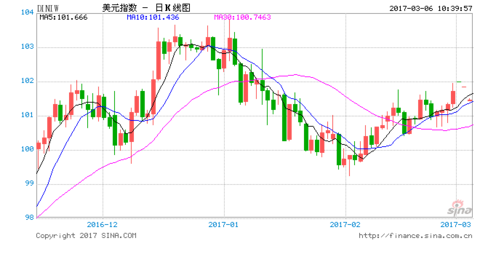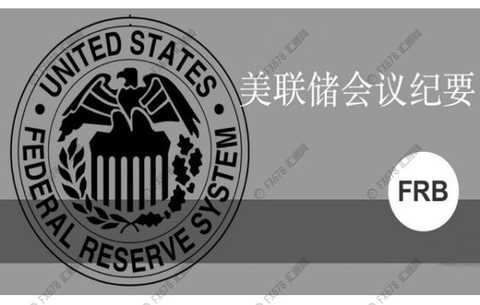
Hot spot funds flow to thousands of stocks to evaluate stocks to diagnose the latest rating simulation transaction
Client
The fund manager's mouse warehouse, said that the capital preservation has become a huge loss, and the fund is pitted to the [fund exposure station]! The credit card was stolen without any reason, the bank deposit became insurance, and the financial management was cheated, please poke [Financial Exposure Desk]!
Original title: The minutes of the meeting will highlight the internal differences of the Fed, and when to raise interest rates, you have to look at Trump.
Huitong.com, January 5th - The minutes of the December meeting released by the Federal Reserve on Thursday morning (January 5) show that the Fed’s December rate hike is largely based on market reaction to the US election and aggressive fiscal policy expectations. . Regarding the minutes of the meeting, the analysts have differences and believe that the pace of interest rate hikes in the future depends on the economic performance of the Trump New Deal.

The minutes of the Fed meeting in December showed that almost all officials said that Trump's fiscal stimulus (infrastructure, tax cuts) will stimulate economic growth in the next few years. About half of policymakers have considered the assumptions of increased fiscal stimulus in their estimates. Officials stressed that the timing, size and composition of the Trump stimulus plan will have an impact on interest rate adjustments.
The most important words are: "uncertainty", "uncertainty"
Barron’s weekly report believes that the minutes of the Fed’s meeting are highly concerned with “uncertaintyâ€. Participants’ uncertainty about the future is much greater than in recent months, so the number of “unsure†and “uncertainty†used in the minutes has also increased. In addition, Chairman Yellen’s press conference last December Frequently mentioned uncertainty, statistics can be seen, the December meeting minutes these two words a total of 15 times, November and September 5 times, July 17 times, June 13 times, April 4 times, 2 times in March and 24 times in January.
Ian Shepherdson, an economist at Pantheon Macroeconomics, said that the key to this minutes is “the uncertainty after the election.†The Fed’s predictions of the economy and interest rates can only be considered as assumptions before the scope, structure, and timing of fiscal policy are determined. Sexual. Although half of the FOMC members have incorporated fiscal policy into their outlook, there is no detailed information about their predictions.
Key topic of the minutes: Trump fiscal stimulus policy
Goldman Sachs pointed out that the December Fed’s hawkish rate hike is largely a response to future fiscal policy, and it is more than just a decision based on pure monetary policy. Taking into account the impact of Trump's future fiscal policy, the Fed will largely offset the "impact" of Trump's policy on the US economy and employment. The future is more inclined to tighten the monetary policy with a loose fiscal policy.
Ward McCarthy, chief financial analyst at the Jeffrey Group, pointed out that in fact, the Fed hinted that the future economic and inflation upward rate may exceed the expectations of policy makers, especially considering Trump's large-scale stimulus plan.
Maximum risk: unemployment rate may continue to decline
According to Fed officials' expectations, the biggest risk in the future is that the unemployment rate continues to decline. Many officials in the December meeting minutes also believe that in the long run, the unemployment rate will be significantly lower than the full employment risk in the future.
The unemployment rate in November has fallen to a nine-year low of 4.6%. Stephen Stanley, chief economist at Amherst Pierpont Securities in the United States, said the unemployment rate plummeted to 4.6%, and even the most stubborn doves who insisted that the labor market remain weak will be yielded. Therefore, the current discussion on the labor market will shift to two aspects: 1. How far will the unemployment rate deviate from the long-term equilibrium? 2. How fast will salary growth become?
Goldman Sachs pointed out that the Fed should raise interest rates faster than currently expected to limit the possible increase in long-term unemployment and mitigate the increasing inflationary pressures.
Minutes position: two sides of the market
eagle:
Prattle's analysts used an algorithm to analyze each word in the December meeting minutes and score them to distinguish the difference between these statements and neutral tone. The score ranges from -2 to 2, with 0 being neutral and positive and negative values ​​representing eagle and pigeon. According to this algorithm, the score of the December meeting minutes was 0.54, which was 0.27 more than the policy statement after the December decision meeting.
Pravan's chief executive, Evan Schnidman, said the minutes of the Fed's December meeting were the most hawkish minutes of the two years. The minutes of the meeting released a strong signal: FOMC members are increasingly worried about the upside risks, which may lead to overheating of the economy, forcing the Fed to raise interest rates faster.
The minutes of the December meeting showed that the members were more radical in raising interest rates and no longer adhered to the "gradual rate hike" they had been emphasizing. As Krishna Guha, vice chairman of the investment bank Evercore ISI, said the minutes of the meeting showed that the interest rate outlook under the basic circumstances is no longer applicable. More members believe that there is an upside risk in the future interest rate path.
Partial pigeon:
Ian Lyngen, BMO's head of bond market strategy, said that the minutes of the meeting were not as hawkish. The minutes of the meeting showed that FOMC members expressed concern about the downside risks brought by the strong dollar. This implies a slowdown in overseas economic growth.
He concluded that while the boost of confidence will help promote investment, many Fed officials stressed that the effects of fiscal policy are uncertain.
Peter Boockvar, chief market analyst at Lindsey Group, said he still faces a dovish FOMC, and that will continue in 2017. The Fed still stressed that the final rate hike path will depend on the economic outlook presented by economic data.
Economists at Economy.com believe that the minutes of the December meeting did not indicate a sense of urgency to raise interest rates. As the Fed officials believe that the future economic outlook is full of uncertainty.
When will the interest rate increase next time?
The British "Financial Times" said that this time the minutes did not disclose the timing of the next rate hike as expected, because officials believe that Trump's new policy after taking office is extremely uncertain. Many details of President Trump's negotiations with Congress in the coming months may be key, but now unpredictable.
As Yellen mentioned earlier, it is still too early to discuss how fiscal policy will affect the economic outlook. If both economic growth and inflation rise under Trump's administration, the Fed will modify the expected path of raising interest rates.
Goldman Sachs believes that the December meeting minutes did not send a clear signal to the short-term policy line. The bank believes that interest rates will rise in June, and the probability of a rate hike in March is 35%.
Pantheon Macroeconomics maintains expectations for the Fed's next rate hike in March, but it is based on the assumption that the first quarter growth data is excellent, especially employment data, and the fiscal policy is determined and the strength is considerable.
At present, the US federal funds rate shows that the Fed’s probability of raising interest rates in March is 34.8%, the probability of raising interest rates in June is 72.8%, and the probability of raising interest rates in September is 86.1%.
In addition to the Trump policy, partial replacement of FOMC members will also have a major impact on the direction of monetary policy in 2017: two of the most hawkish FOMC members in 2016 – Cleveland Fed President Mestre, Kansas Fed President George, St. Louis Fed President Rosen Glenn of Brad, the dove of the Boston Fed branch, will no longer have the right to vote on the 2017 decision, replaced by three powerful doves and a centrist, as shown below. At present, the market generally expects the Fed to raise interest rates 1-2 times in 2017.

Enter [Sina Finance and Economics Unit] Discussion
Breathable Socks,Casual Socks,Leisure Socks,Cotton Casual Socks
Jiangsu Qianlima Stockings Co., Ltd , https://www.qlmsocks.com